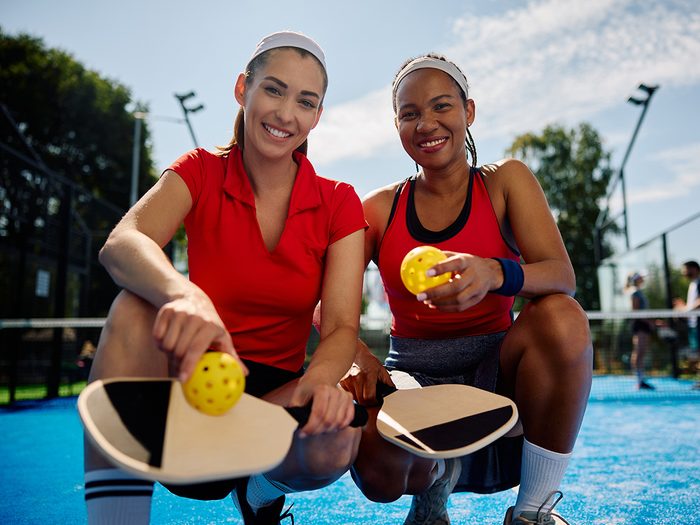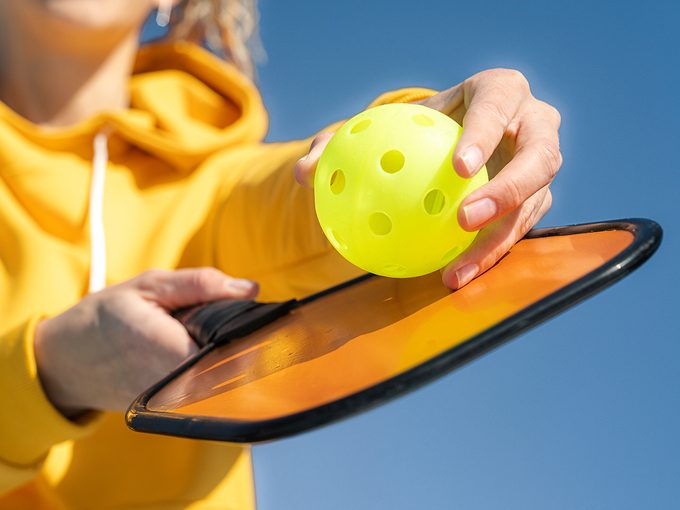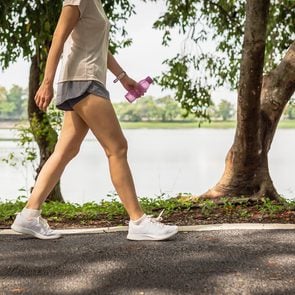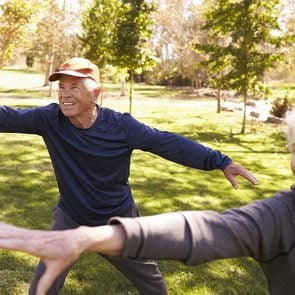What is Pickleball? The Sport’s Exploding Popularity, Explained

Whether you're wondering what it is or how to play, here's the rundown on pickleball.
In the last few years, pickleball has taken Europe and North America by storm. There are more than 200 official community clubs registered with Pickleball Canada and an estimated one million Canadians playing each month. In the U.S., there is a professional league (ex NFLer Tom Brady is part owner of a Major League Pickleball team). And the International Federation of Pickleball, which has 60 member countries and counting, is working toward having the game recognized as an Olympic sport. So if you haven’t played it yourself, you’ve probably at least heard of pickleball—even if you don’t quite understand it.
What is pickleball?
“Pickleball takes components from tennis, badminton and table tennis,” says Hope Tolley, managing director of recreational programs for USA Pickleball. It’s played on a badminton-sized court and with a net that’s almost as high as for tennis. Players use square paddles and a small, perforated plastic ball that’s similar in size to a tennis ball, but much lighter. Since the lighter ball doesn’t bounce as much, it’s easier to get a rally (continuous back-and-forth play) going.
How to play pickleball
Unlike tennis, you can score only when it’s your turn to serve. If your opponent (called the receiver) fails to return the ball over the net, either from the serve or in a rally, you get the point. Be sure to hit with enough force or you’ll end up with a “falafel”—pickleball slang for a shot that falls short of the net. Matches can be played in doubles or singles, and games are played to 11 points (and must be won by a margin of two points). Lose with a score of 11–0 and you’ve been “pickled”!

The benefits of pickleball
Whether you play regularly—making you a “pickler”—or only once in a while, it’s a very social game and a great way to make new friends, says Tolley. “It’s a sport that’s bringing folks together.”
Part of the appeal is that pickleball is easy to learn and is accessible to anyone, from kids to seniors. While older adults were early adopters, those aged 18 to 34 now represent the fastest-growing player group.
It all started in the U.S. in the 1960s, in the backyard of congressman Joel Pritchard from Washington state. He and two dad friends started an improvised game of badminton, with the goal of keeping their kids busy, using what was on hand: an old badminton court, some Ping-Pong paddles, a volleyball net and a wiffle ball.
Fast forward six decades and pickleball—the name is a nod to “pickle boats,” a term used to describe a motley group of rowers who are thrown together at random to compete—is one of the hottest trends in sports and popular culture.
Playing the game can improve your hand-eye coordination and increase your reaction time. And because you can vary the intensity—playing all-out from the get-go or taking a slower pace—pickleball suits serious athletes and weekend warriors alike. It’s a great aerobic workout, and because it’s a low-impact sport, it’s easy on your joints.
How to get started
You don’t need to join a league to get in on the action. “It can be played in non-traditional spaces like gymnasiums and parking lots,” says Tolley. Any smooth surface will work, as long as you have a net, a ball and a paddle (available to buy for as little as $30).
People who are really into the sport can join tournaments at various levels. The first-ever World Pickleball Games will be held next summer at the Austin Pickle Ranch in Texas with teams coming from around the world.
By 2030, pickleball is expected to have as many as 40 million players worldwide. Its popularity has also led to increased interest in other racket sports. For instance, padel, a fast-paced combination of tennis and squash invented in Mexico in the late 1960s, is gaining traction across Europe and South America.
Next, discover the proven health benefits of nordic walking.






